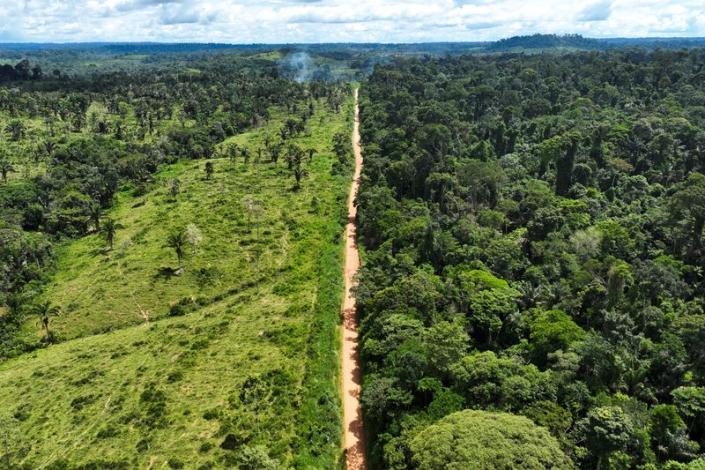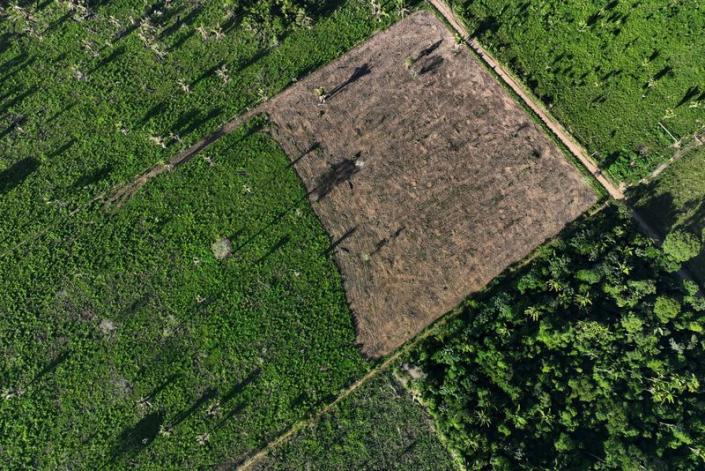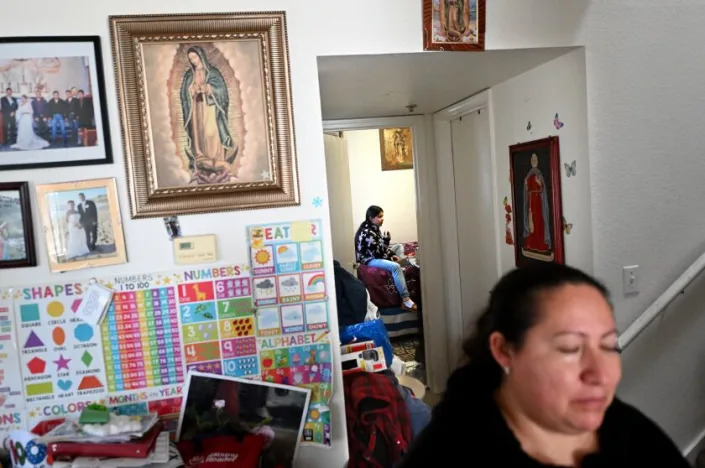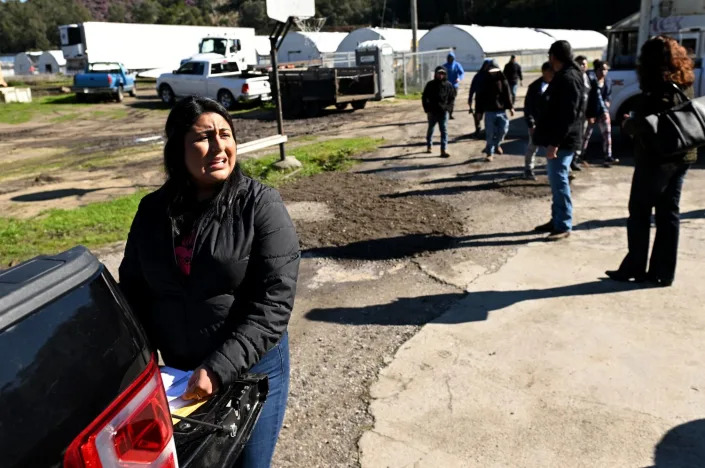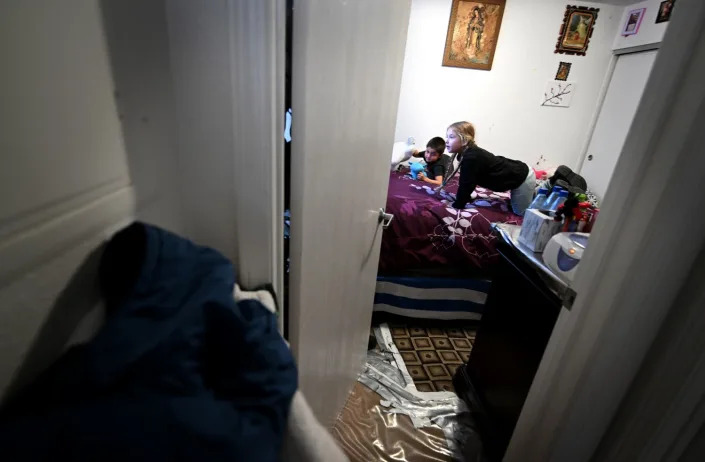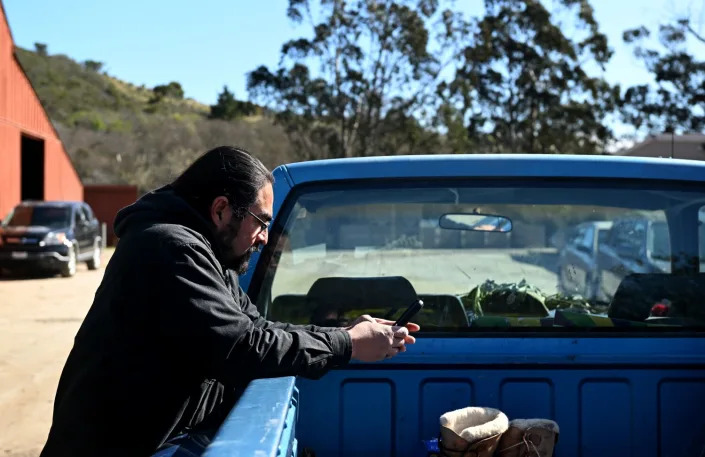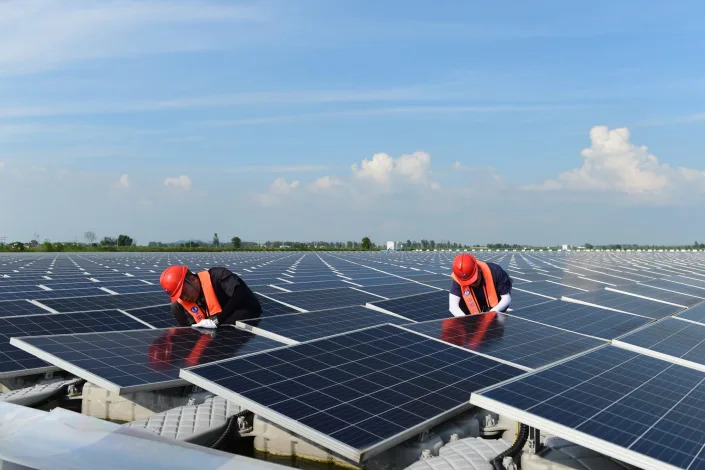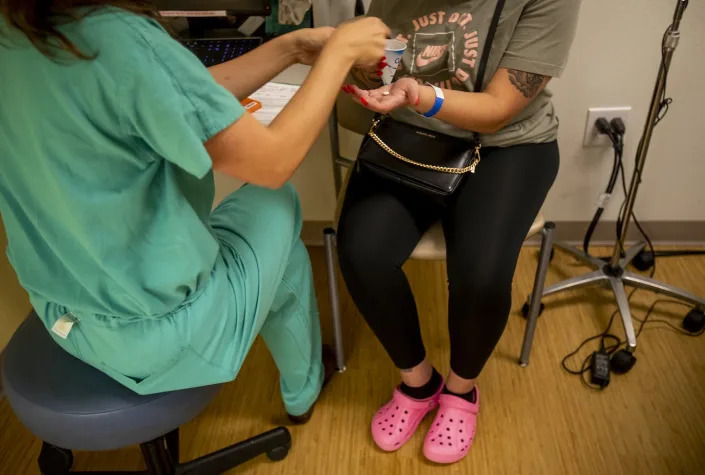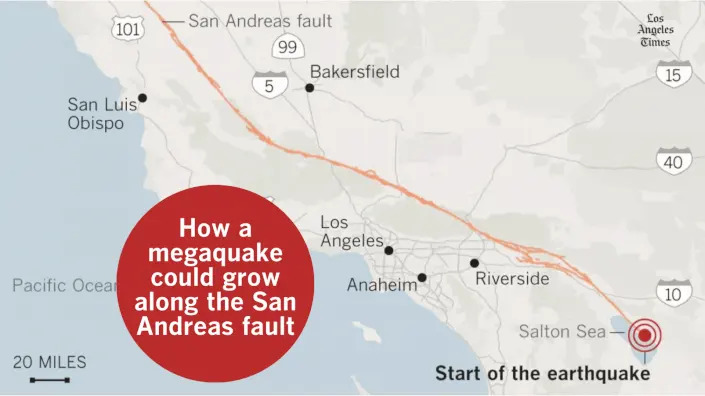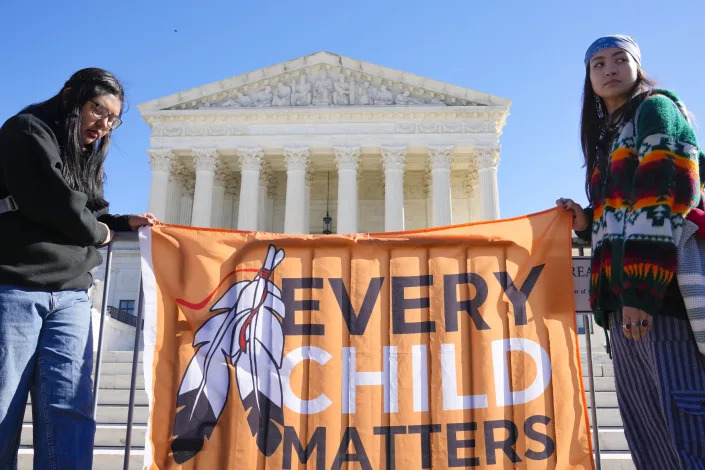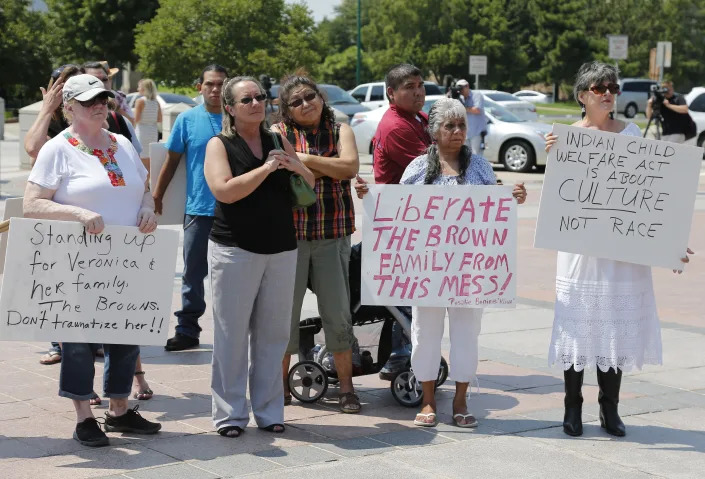Biden host's Brazil's Lula for talks on Amazon protection
LULA VISIT IGNORED BY MEDIA FOR UFO GETTING SHOT DOWN
NEWS WIRES
Fri, 10 February 2023
Brazil's leftist President Luiz Inacio Lula da Silva traveled to Washington on Thursday, invited to the White House by President Joe Biden in a visit that will focus on support for Brazilian democracy and shared environmental commitments.
The U.S. government is considering joining a multilateral fund aimed at fighting Amazon deforestation in Brazil, an a contribution could be announced during their meeting, two U.S. officials with direct knowledge of the matter said.
Relations between the Western Hemisphere's two largest democracies had been lukewarm under Lula's far-right predecessor Jair Bolsonaro, an ally of Republican former U.S. President Donald Trump.
Lula will visit Biden on Friday afternoon, after meeting with Senator Bernie Sanders and Democratic lawmakers in the morning.
Brazil's Foreign Ministry said support for democracy, human rights and the environment will be at the center of Lula's agenda in Washington.
Brazil is also eager for more countries to contribute to the Amazon Fund started by Germany and Norway to back protection of the rainforest and sustainable development projects.
The Biden administration is looking into joining the $1.3 billion fund, the two U.S. officials confirmed to Reuters.
A U.S. contribution to the Brazilian-administered fund would underline the resetting of ties between the two countries after the recent period of frosty relations.
Bolsonaro flew to Florida 48 hours before Lula was sworn in and has requested a tourist visa to stay in the United States.
Biden Says Democracy Prevailed in US, Brazil as Lula Visits
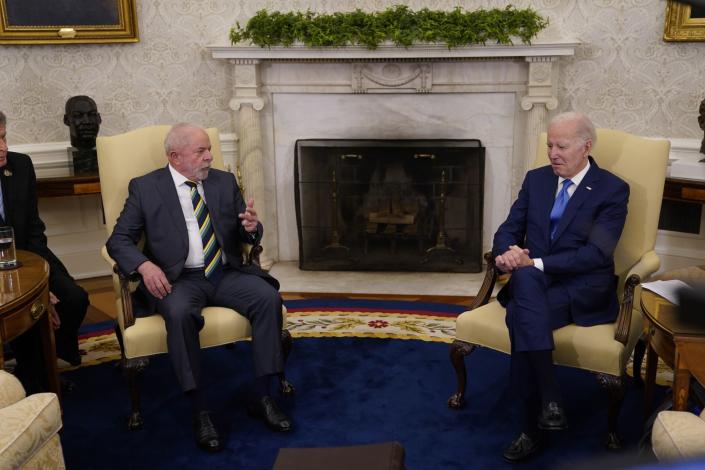
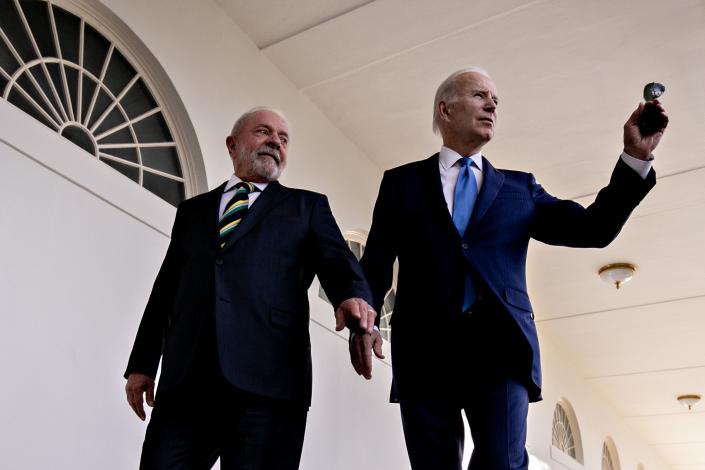
Jordan Fabian and Simone Iglesias
Fri, February 10, 2023
(Bloomberg) -- President Joe Biden, meeting his Brazilian counterpart at the White House, said “democracy prevailed” in both the US and Brazil after severe attacks against its institutions.
“Both our nations’ strong democracies have been tested of late, very much tested, and our institutions were put in jeopardy,” Biden said Friday as he hosted Luiz Inacio Lula da Silva less than six weeks after his inauguration. “We have to continue to stand up for democracy, democratic values that form the core of our strength.”
The Oval Office sit-down was meant as a show of support for Brazil’s newly elected government and to demonstrate relations between the two biggest democracies in the Americas are back on track.
Biden, 80, and Lula, 77, are veteran politicians who share common progressive beliefs and have faced down similar challenges from their far-right predecessors on their paths to power.
The Democratic US president defeated Republican incumbent Donald Trump in 2020, only for Trump’s supporters to storm the Capitol on Jan. 6, 2021 in an effort to overturn his loss. Lula, who had already served in the nation’s top job, last year beat then-President Jair Bolsonaro, a Trump admirer. But just a week after his Jan. 1 inauguration, pro-Bolsonaro rioters stormed the capital of Brasilia in a failed attempt to oust the leftist leader.
Lula said his predecessor despised international relations, and that his world started and ended with “fake news” in the morning, afternoon and night.
“Sounds familiar,” Biden quipped in response.
Biden said the two countries would “stand together to reject political violence.”
“We have to work together so that another invasion of the Capitol never happens again, so that the invasions of the powers that occurred in Brazil never happen again,” Lula said.
Amazon Fund
In addition to shoring up democratic institutions, the two leaders found common ground on climate change. During his campaign, Biden offered to work with international partners to create a $20 billion fund to protect the Amazon, which was subject to rapid deforestation under Bolsonaro.
Read More: Biden Pledges to Slow Destruction of Brazil’s Amazon Rainforest
After the meeting, Lula told reporters that he talked with Biden about the importance of rich countries providing financial assistance to developing nations that are home to the world’s remaining tropical forests. The US, he added, will likely join the Amazon fund or a similar instrument that could engage a larger number of countries to combat deforestation.
The US later announced in a joint statement its “intent to work with Congress to provide funds for programs to protect and conserve the Brazilian Amazon, including initial support for the Amazon Fund, and to leverage investments in this critical region.”
Lula has said he’s strongly committed to fighting climate change and pledged to end deforestation in the Amazon by 2030.
Yet their meeting also exposed differences, as Lula showed he’ll not abide by US orthodoxy on international affairs. For instance, the Brazilian president said he pitched to Biden the creation of a group of countries that could offer to mediate peace between Russia and Ukraine, possibly having China as a mediator — which is anathema to Biden and Kyiv’s allies.
In the joint statement, the leaders “deplored the violation of the territorial integrity of Ukraine by Russia and the annexation of parts of its territory as flagrant violations of international law and called for a just and durable peace.” They also expressed concern about the global effects of the conflict on food and energy security.
Adding to the tensions is the presence of both their former opponents in Florida, as they plot political comebacks. Bolsonaro has vacationed in the Sunshine State since Dec. 30, while Trump has based himself at his Mar-a-Lago estate.
While Biden has faced pressure from congressional Democrats to expel Bolsonaro, Lula was not planning to bring up the topic in the Friday meeting. The US government has taken a wait-and-see approach, hoping the former Brazilian leader leaves the country on his own.
(Updates with Lula’s post-meeting comments and joint statement starting in paragraph 11.)
BREAKING: U.S. Military Shoots Down Another ‘High-Altitude Object’ Over Alaska
Andrew Daniels
Fri, February 10, 2023 at 2:04 PM MST

U.S. Military Shoots Down 2nd High-Altitude ObjectCHANDAN KHANNA - Getty Images
The U.S. military shot down a “high-altitude object” over Alaska airspace on Friday afternoon.
The object was “roughly the size of a small car,” compared to the much bigger Chinese spy balloon that the U.S. shot down last weekend.
The object was flying at an altitude of 40,000 feet.
Updated 4:00 p.m. ET: On Friday afternoon, the U.S. military shot down another unauthorized “high-altitude object” that was flying over Alaska airspace, National Security Council official John Kirby told reporters at the White House.
It was the second time in six days that the U.S. military eliminated a mysterious object, after an F-22 shot down a Chinese spy balloon last Saturday.
Kirby said President Joe Biden gave the OK to shoot down the fast-moving object, which hasn’t yet been identified as a balloon, after the U.S. Department of Defense tracked it over the last 24 hours. “The object was flying at an altitude of 40,000 feet and posed a reasonable threat to the safety of civilian flight,” Kirby said. “Out of an abundance of caution, and at the recommendation of the Pentagon, President Biden ordered the military to down the object, and they did.”
Kirby said the high-altitude object, which officials confirmed was unmanned, “came inside our territorial waters and those waters right now are frozen.” According to Kirby, fighter aircraft from the U.S. Northern Command took down the mysterious object between 1 p.m. and 2:30 p.m. ET.
Kirby said this object was “much, much smaller” than the Chinese spy balloon the U.S. military shot down last Saturday, but there are no indications as to whether or not it contained surveillance equipment. “The way it was described to me,” Kirby said, “was roughly the size of a small car as opposed to a payload that was two or three buses sizes.” He continued: “No significant payload.”
It’s unclear who owned or sent the object, U.S. officials said, via the New York Times.
We will continue to update this story as more information develops.
